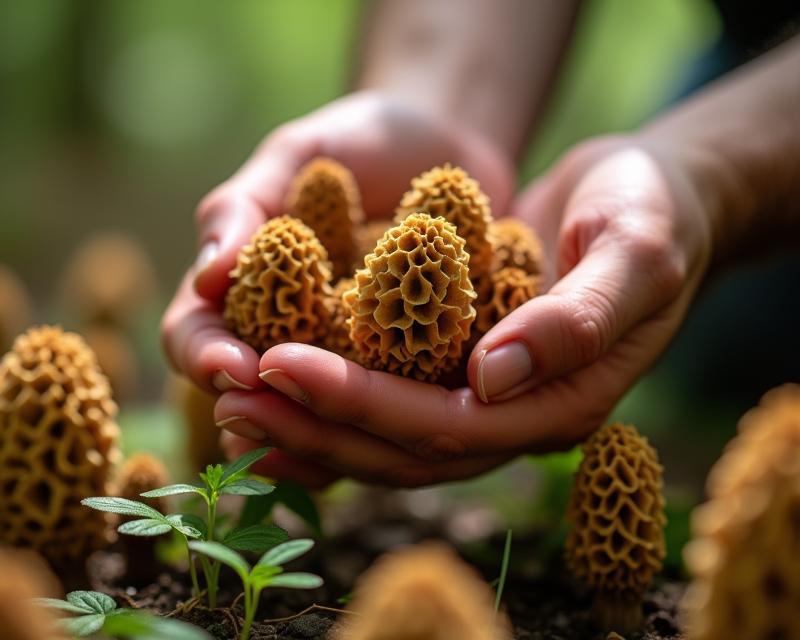Morel Mushroom Hunting: A Springtime Treasure
Publish in Crops el 21/07/2025 20:11
Wild Morel Mushroom Hunting: A Springtime Treasure
Spring is a magical time for foragers, and few treasures are as sought after as the wild morel mushroom. These delicious, honeycombed fungi are a true delicacy, prized for their unique flavor and texture. Whether you're a seasoned hunter or a curious newcomer, understanding where and when to find morels can be a rewarding experience. This guide will provide you with essential information to get started on your morel hunting adventure.

When and Where to Look
Morel season typically runs from late March through May, depending on your location and the weather. They thrive in the springtime when temperatures are mild and rainfall is consistent. Look for morels in areas that were recently disturbed – think recently burned forests, areas with fallen trees, or fields that have experienced flooding. They often pop up near elm, ash, apple, and hitchory trees, as these trees have a symbiotic relationship with the fungi. Deciduous forests are your best bet!
Expert Tips for Successful Hunting
- Timing is Key: The best time to hunt is usually a few days after a warm spell followed by rain. This encourages the morels to emerge.
- Look Up! Morels often grow on the sides of hills and slopes, facing upwards towards the sun.
- Honeycomb Structure: Morels have a distinctive honeycomb-like cap. However, be cautious – false morels can resemble them. False morels have a brain-like appearance and are generally considered inedible, and some can cause gastrointestinal upset.
- Listen for Stories: Talk to local experienced foragers! They often have secret spots and valuable insights into the best areas to search.
- Safety First: Always be aware of your surroundings. Wear appropriate clothing, sturdy shoes, and consider bringing a map and compass or GPS. Be mindful of ticks and other wildlife.
Morel Hunting and Sustainable Practices
When foraging for morels, it's crucial to practice sustainable harvesting. Only take what you need, leaving plenty of mushrooms to reproduce. Avoid disturbing the surrounding environment unnecessarily. Consider using a mesh bag or basket to allow spores to disperse as you walk. By practicing responsible foraging, we can ensure that morel populations continue to thrive for years to come. Morel hunting isn't just about a delicious meal; it's about connecting with nature and appreciating the bounty of the land. It's a fantastic way for farmers, gardeners, and ranchers to learn more about the ecosystems around them and the natural cycles that support life.
- Respect private property.
- Avoid areas that may have been treated with pesticides or herbicides.





